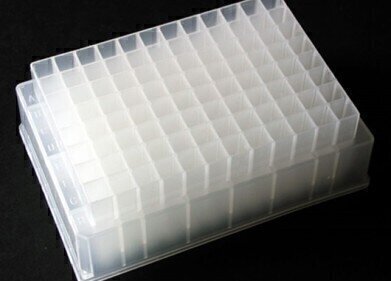Preparative
Protein Reagent Quality in Drug Discovery
Feb 02 2010
Wyatt Technology Corporation (USA) announces that Pfizer Global R&D, has chosen its DAWN® HELEOS® Multi-Angle Light Scattering (MALS) instrument to monitor protein reagent quality in drug discovery. The instrument’s unmatched analytical capabilities are illustrated in a new application note, titled “Using MALS to Ensure Protein Reagent Quality in Drug Discovery”, which is available to download free-of-charge via www.wyatt.com Quality and consistency of protein reagents are critical elements to successful drug discovery and development. When targeting a particular protein of interest, the best way to obtain dependable
results is to perform different in vitro experiments using a protein with similar biological properties. It is important that molecularity, purity, shape and degree of heterogeneity remain the same regardless of any alterations of the model protein or the formulation buffer. Affinity tags or changes to buffer excipients may also be required.
Traditional characterization techniques, such as plate-based assays and biophysical methods where native proteins are preferred, are not efficient when alterations of solution properties of proteins occur. Crystallization studies, for example, typically have a higher Protein Reagent Quality in Drug Discovery rate of success when the proteins involved are simplified, whether they are truncated or expressed in bacteria to minimize post-translational modifications. MALS overcomes these limitations and has proven a very powerful technique for monitoring solution properties of proteins while changes to reagents are taking place.
The new application note demonstrates how light scattering data can be used to elucidate the solution properties of a protein expressed from two different constructs. The first construct was the shorter of the two, designed for crystallization studies. Experimental results, combined with the fact that the enzyme showed activity and was the predominant species in mass spectrometry, would lead to the erroneous confirmation of the suitability of the reagent. The DAWN HELEOS MALS data, however, showed that the enzyme was very heterogeneous. The second construct, which was designed to address this problem, was the full-length enzyme. In that case, the
DAWN HELEOS demonstrated that the protein was in its biologically active form (dimer) and was highly homogenous. This information provided confidence to the project team at Pfizer to move forward with the second construct for crystallography, NMR and HTS studies. For further information please email wyatt@scottpr.com
Digital Edition
Chromatography Today - Buyers' Guide 2022
October 2023
In This Edition Modern & Practical Applications - Accelerating ADC Development with Mass Spectrometry - Implementing High-Resolution Ion Mobility into Peptide Mapping Workflows Chromatogr...
View all digital editions
Events
ACS National Meeting - Fall 2024
Aug 18 2024 Denver, CO, USA
Sep 04 2024 Chiba, Tokyo, Japan
Sep 04 2024 University of Warwick, Coventry, UK
Sep 10 2024 Rockville, MD, USA
Plastics Recycling World Expo Europe
Sep 11 2024 Brussels, Belgium














